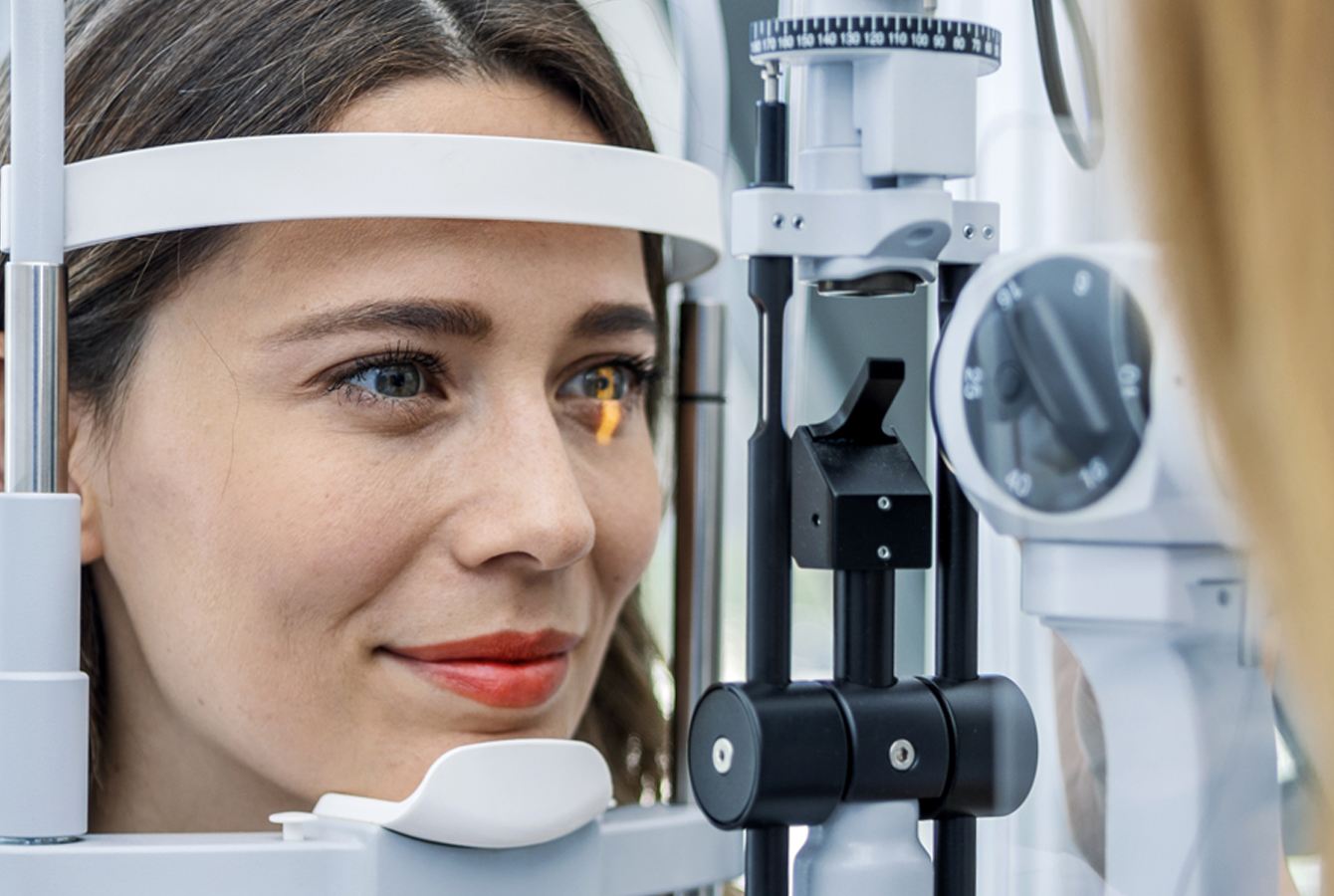Diabetes and eye disease: prevention is better than cure
05 December 2023 | Comment(s) |
Emma Raposo

Diabetes is a well-known and widespread disease. While we are all aware of its main health consequences, we may not be aware that it can also affect the eyes. Here's a closer look at the main eye diseases associated with diabetes.
Around 450,000 people in Switzerland suffer from diabetes. A distinction is made between type 1 diabetes mellitus, in which the beta cells in the pancreas that produce the insulin needed to regulate blood sugar levels are destroyed by the immune system, and type 2 diabetes mellitus, in which the pancreas still produces insulin but no longer in sufficient quantities, or the body is unable to use it effectively to convert sugar into energy. There is also gestational diabetes, which develops during pregnancy.
Diabetes is obviously not to be taken lightly, because over time, persistent hyperglycaemia (high blood sugar levels) leads to vascular damage affecting organs such as the heart and kidneys. Diabetics are more at risk of myocardial infarction, stroke and kidney failure.
What is less well known is that diabetes is a risk factor for a number of eye diseases, and can lead to reduced vision and even blindness if left untreated. The risk of blindness is 50 to 100 times higher in people with diabetes. The good news is that all these problems can be avoided, or at least slowed down.
The main eye diseases to watch out for in diabetes

1. Diabetic retinopathy
As mentioned above, hyperglycaemia causes damage to the body's blood vessels. In diabetic retinopathy, hyperglycaemia damages the micro-vessels of the retina. This condition is one of the main causes of visual impairment worldwide. All patients with all types of diabetes are at risk of developing a form of diabetic retinopathy caused by blood sugar disturbance. It is an insidious disease that progresses silently. Symptoms only appear once the disease has taken hold. It should be noted that the duration and severity of diabetes play a major role in the deterioration of symptoms such as:
- blurred, blurred vision, followed by rapid loss of sight
- distorted images and lines
- impaired night vision
- an increase in shadows in the field of vision
- difficulty perceiving contrasts and colours
2. Open-angle glaucoma
Like diabetic retinopathy, open-angle glaucoma is a disease that operates in silence and only reveals itself in its advanced stages. You could be suffering from it without even knowing it. While there are several forms of glaucoma, open-angle glaucoma is the most common, and diabetes is one of its risk factors. This pathology affects the optic nerve, eventually destroying it little by little. The destruction of the optic nerve is due to an abnormal increase in eye pressure, itself caused by an alteration in the drainage of the liquid present in the eyeball, known as the aqueous humour. The result? Vision is impaired on the sides. As the field of vision narrows, it is eventually severely reduced.
3. Cataracts
A cataract is a gradual clouding of the crystalline lens. This reduction in the transparency of the crystalline lens hinders the penetration of light to the back of the eye. Although this disease is typically linked to age, diabetes is one of the main risk factors for its development. The major symptoms of cataract are:
- reduced colour and contrast
- reduced field of vision, impaired near and distance vision
- glare
- double vision and small spots in the field of vision

Screening tests to stay on top of things
As we have seen, diabetic retinopathy and open-angle glaucoma are both asymptomatic conditions. So, as soon as you have been diagnosed with diabetes, it is important to make an appointment with your ophthalmologist for targeted check-ups, whether for one or other of these diseases. In the case of diabetic retinopathy, regular eye examinations are preferred. The frequency of these checks will depend on the condition of the eyes and the duration and severity of the diabetes. For glaucoma, it is recommended that you have a check-up by a specialist every three years from the age of 40, then more frequently as you get older. Screening enables glaucoma to be diagnosed and treated at an early stage, so that eyesight can be preserved as well as possible.
Unlike the previous two conditions, cataracts are difficult to prevent. The only treatment is surgery, which is quick and painless. However, the risks can be reduced by protecting the eyes from trauma, such as injuries, and by wearing sunglasses from an early age. In all cases, good diabetes management and regular eye tests can help prevent eye problems, or at least limit their complications.





